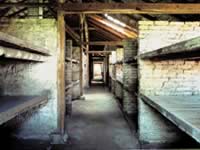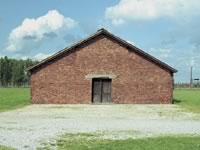 |
       |  |
|
|
|||||||||||||||
 Auschwitz Photos Holocaust Memorial Day approx. 15 copies in Russia or Polish available, copies signed, in a box, stamped and signed, 175,-€ s. The Photobook Vol. II, Martin Parr/Gerry Badger, page 244/245 Materials Auschwitz-Birkenau Photobook Preview (PDF, ~450Kb)  Deutsch Deutsch English English Français Français Polskie Polskie Русский перевод Русский перевод»Prolog« Gerhard Schoenberner  Deutsch Deutsch English English Français Français Polskie Polskie Русский перевод Русский перевод»Epilog« Stefan Skowron  Deutsch Deutsch English English Français Français Polskie Polskie Русский перевод Русский перевод»Intentions« Marceline Loridan-Ivens  Deutsch Deutsch English English Français Français Polskie Polskie Русский перевод Русский переводTexts about the movie  Treatment Treatment Synopsis Synopsis |
Auschwitz-Birkenau Hommage á Marceline Loridan-Ivens In April 2002 I was approached by the French director Jerome Missolz and asked if I would be interested in taking photographs of the Auschwitz-Birkenau concentration camp as part of a film production. The project was part of Marceline Loridan-Ivens’ autobiographical feature film entitled “Birkenau und Rosenfeld”, which describes the reasons that she, a survivor of the camp, returns to the scene 50 years later. In the film she meets Oskar, a German photographer, also on a type of quest. (At the end of the book there is a text written by Marceline Loridan-Ivens explaining the background of this trip). My task was to take photographs of the concentration camp which would then appear throughout the film as the work of the photographer, Oskar, (played by August Diehl). I flew to Krakow in June 2002. Not knowing what to expect, I took all manner of photography equipment with me - a good 50 kg of check-in luggage. On the first day the entire team visited the Auschwitz-Birkenau camp together, as well as the old Jewish quarter in Krakow. We accompanied Marceline on the tour; the side track of the Auschwitz-Dziedzice railway line; the barracks in which she lived and managed to survive; the crematoria; the “sauna” in which began the process of dehumanising those who were not sent immediately to the gas chambers and where Marceline's new identification was tattooed on her skin; the outdoor incineration site where thousands of bodies were placed in heaps and burned; the “lakes” filled with human ashes; “Canada”, the exhibit rooms filled with possessions stolen from hundreds of thousands of people; and finally the “ramp” and the main door; all of this was difficult for the team, and one can barely imagine what it must have meant to Marceline. In the former Jewish quarter, many sections of which were used as sets for filming, we were confronted on many occasions with blatant anti-Semitism, which gave me only the slightest hint of what it must be like to be a Jew. I stayed on after the team left and started to take photographs. My head was flooded with images of photographs and books on concentration camps, and even before I left I had decided make further use of the photographs I took initially for the film. I decide to publish a book, not least in response to the myriad books which I came across while I was researching the project, which documented the current state of the camp, or should I say memorial. Most of these books failed to deliver what their titles and texts suggested. In some ways any form of documentation can be considered significant. But in my opinion, this particular genre of photography - half-hearted, aesthetically pleasing images, more often than not black and white - is wrong. But these, unfortunately, are the stereotypical images sought after by so many people. And as if to prove my point, while I was visiting the ruins of crematorium III, I met two young photographers armed with Leicas and red filters, evidently in pursuit of such »spectacular« images. Now I have produced this book and have made, for sure, many mistakes. But even before embarking on this project I was aware of the limits and opportunities afforded by this project. The atmosphere of paralysing terror as well as the incomprehensible horror which once dominated Auschwitz is not possible to reproduce today. Black and white images, ostensibly serving documentary purposes, are unable to transport the audience back to this era of terror. And so I decided it was time to break with this tradition of dramatisation and use colour photography to show the place as it is today, June 2002, with its rich and luscious greenery and tranquil environs, which, in view of its history, is somehow peculiar and at times unbearably disconcerting. The photographs in this book follow the route we took with Marceline in June 2002: from her point of arrival, through the concentration camp - in clockwise fashion - to the main gate. On the way I noticed the composition of the landscape, how it was broken up by the staccato nature of the chimneys, fences, birch tree and other landmarks - even though I had initially decided to focus as little as possible on photographic composition. Some of the photos in this book are accompanied by excerpts from the memoirs of Commanding Officer Höss, the former head of the Auschwitz camp, which he wrote while imprisoned in Krakow in 1946. The excerpts are not memoirs or journal entries as such, but by reading between the lines of these somewhat self-pitying protestations at the discomfort he felt while carrying out “certain actions” we are afforded an insight into the perverted nature of an entire generation of villains. The photographs should serve as a key for opening this topic for discussion. But at the end of the day they may simply be no more than an irritation, which I choose to employ to illustrate, as Jan Philip Reemtsma once put it, “something which is in this world and should not be allowed to be of this world”. But more than anything else, this book is a tribute to Marceline Loridan-Ivens. Andreas Magdanz, Aachen, Germany, July 2003 |
|||||||||||||||
| news andreas magdanz works new projects magbooks press teaching contact imprint | deutsch | ||


